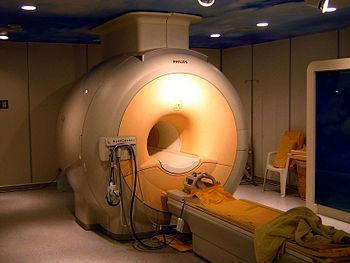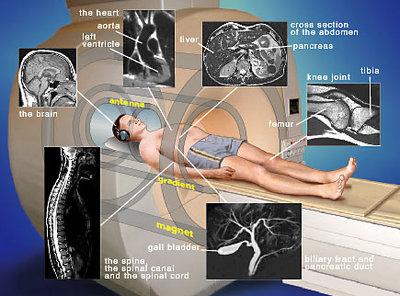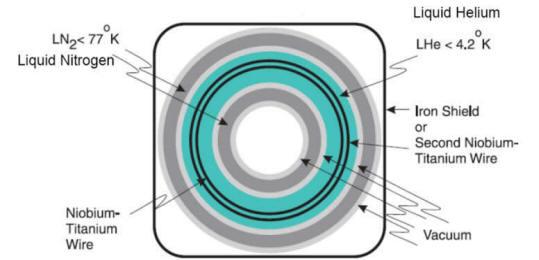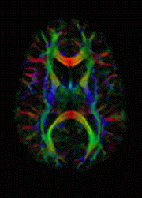Introduction
Medical imaging is described as one of the fastest growing fields in the healthcare industry (Caruana 2008). Magnetic resonance imaging has emerged as one of the most important procedures in this field. It makes use of nuclear magnetic resonance to provide a detailed image of the organ under examination. The technique uses a powerful magnetic field to provide a detailed image of the internal body structure. It is regarded as a non-invasive technique, which is preferred by many practitioners today. It is safe as it poses few threats to the patient (Golder 2007). In addition, it is critical in the diagnosis and treatment of patients suffering from a variety of illnesses, such as cancers. In addition, MRI shows superiority in scanning soft tissue organs, such as, muscles, ligaments, and the brain. In this paper, the Larmor equation will be explained to show that precession frequency in a magnetic resonance imaging scanner increases with an increase in the strength of the static magnetic field. Also, the impacts of precession frequency on the quality of images with 1.5 Tesla or 3 Tesla scanners have been discussed.

The Physical Principles behind Larmor Equation
The Larmor Equation shows that the precessional frequency is directly proportional to the strength of the static magnetic field (Harvey 2004). What this implies is that an increase in the strength of the static magnetic field automatically translates to an increase in precessional frequency (Harvey 2004). The magnetic resonance technique works on the assumption that body tissues and organs contain a lot of water. Each water molecule is made up of two protons in the form of hydrogen nuclei. The strong magnetic field used in magnetic resonance scanners rearranges these protons depending on the direction of the magnetic field. When an electromagnetic radio frequency is applied, the protons absorb the energy and shift to a ‘higher energy state’ (Harvey 2004). The resulting change in alignment is very important. It gives rise to a signal that is analysed by a magnetic resonance imaging scanner.
The magnetic resonance imaging scanner probes the ‘excitation’ of the nuclei in their different energy states (Tanenbaum 2005). The alignment of these protons is determined by the flow of the external magnetic field. The polarity of the source of the external field will determine the alignment of the protons inside the body tissue under examination. As a result, the status of the SMF plays a significant role in determining precessional frequencies. One explanation for this observation is that the speed of proton resonation is affected by the status of SMF used. High precessional frequencies are brought about by an increase in the strength of static magnetic field. The increased strength helps in creating an image of the tissue or organ under examination.
Protons contained in the tissue under scrutiny have two spin states. The two, according to Woodward (2002), are the ‘up’ and ‘down’ spin states. When placed within a magnetic field, the protons rearrange themselves depending on the direction of the magnetic field. The protons have two different energy states. The two are low- energy and high- energy states. The two types of protons are separated from each other by a small amount of splitting energy, creating a form of polarisation.
The magnetic resonance imaging scanner is set in such a way that the ‘difference in proton spin’ (Woodward 2002) corresponds to the radio frequency. The strength of the external magnetic field determines the strength of external oscillations. As a result, it has an impact on the protons’ precession frequency. Analysts have noted that high precision frequency tends to improve the quality of the image generated. Developers of magnetic resonance scanners have started manufacturing devices that use strong static magnetic field in an attempt to improve the quality of images generated. The trend is witnessed in the healthcare sector, with practitioners replacing the 1.5Tesla scanner with the 3Tesla scanner, whose static magnetic field is twice the strength of that used in the 1.5Tesla scanner.
In magnetic resonance imaging, the practitioner ensures that static magnetic field varies across the body. The variance from one part of the body to the other enables the individual carrying out the analysis to associate various body locations with different precision frequencies (Keeler 2005, 46). As a result of this, it is possible to sum up the physical properties of the magnetic resonance imaging scanner using the Larmor Equation. The summation shows that precession frequency is directly proportional to the strength of the static magnetic field. The figure below is an illustration of how the strength of static magnetic field is varied to facilitate multiple body analysis:

Impacts of the Larmor Equation on the Quality of the Image: A Comparison Between 3 Tesla and 1.5 Tesla
Both 3Tesla and 1.5Tesla magnetic resonance imaging scanners are used in health facilities around the world to provide high quality healthcare services. The two are used in scanning body tissues and organs to determine the health condition of the patient (Tyszka 2005). In the recent past, medical centres around the world have replaced the 1.5Tesla scanners with the new and more efficient 3Tesla scanners. The improved functionality of the 3Tesla scanner is attributed to the fact that the scanner uses magnetic fields that are stronger than those used in the 1.5Tesla scanner (Harvey 2004). The scientific explanation for this is based on the Larmor Equation, which indicates that precessional frequency is directly proportional to the strength of the static magnetic field (Harvey 2004). The 4Tesla magnetic resonance scanner uses static magnetic field that is twice the strength of the one used in the 3Tesla scanner. The figure below is an illustration of a magnetic resonance imaging scanner and the components that support its functioning:

Application of strong static magnetic field improves the quality of images provided. Strong static magnetic field significantly reduces the time taken to scan a given organ. As a result, it reduces the time spent in scanning patients, as well as the level of exposure for the patients (Hilty 2010, 747). The quality of images obtained using the 3 Tesla scanner is higher than that of images obtained using the 1.5Tesla scanner. The difference in quality is brought about by increased precessional frequencies associated with the new system. The high quality of images leads to improved brain, heart, and muscle analysis. The improved clarity of the images generated helps medical practitioners to effectively identify the affected body tissues and organs. The practitioner is able to differentiate between normal body tissues and those affected by tumours and other abnormalities.
Medical Applications of 1.5Tesla and 3Tesla Scanners
The magnetic resonance imaging technique has a variety of applications in the field of medicine. The 3Tesla and the 1.5Tesla magnetic resonance scanners are two of the most popular devices used in magnetic resonance imaging. The 3Telsa scanner is an improved version of the 1.5Tesla scanner. The 3Tesla scanner generates high quality images compared to the 1.5Tesla scanner (Cosans 2007, 31). The quality of images generated by the 3Tesla scanner allows for complex medical examinations.
The 3Tesla captures more details of the organs and tissues under examination compared to the 1.5Tesla. An example is the application of the scanner in real-time imaging of, among others, spine rootlets, the structure of the brain stem, deep set lung diseases, and cartilage textures. The 1.5Tesla scanner does not have these capabilities (Shellock 2008, 25). The high resolution of images generated by the 3Tesla scanner helps the practitioner to differentiate between healthy brain tissues and tumours when scanning the brain. The improved clarity of 3Tesla images enhances diagnosis of diseases and detection of abnormalities in body tissues.

Conclusion
The invention of the magnetic resonance imaging technique has significantly improved medical screening. The Larmor Equation has further improved the quality of services provided in this field. Medical practitioners have resorted to the use of strong static magnetic fields to improve medical imaging. The 3Tesla scanner uses stronger static magnetic fields compared to the 1.5Tesla scanner. The development has improved the quality of angiogram images generated by the scanner. The clarity of angiography images is crucial in medical examinations. It improves the diagnosis and treatment of various conditions, such as cancers.
Reference List
Caruana, Jackson. 2008. “The Role of the Biomedical Physicist in the Education of the Healthcare Professions: An EFOMP Project of Physica Medica.” European Journal of Medical Physics 25 (3): 133-140.
Cosans, Richard. 2007. Applied Physics in Medical Imaging. New York: Free Press.
Golder, Walter. 2007. “Magnetic Resonance Spectroscopy in Clinical Oncology.” Onkologie 25 (3): 304–309.
Harvey, Dan. 2004. “Stronger Magnets and Evolving Guidelines.” Radiology Today 5 (25): 18-23.
Hilty, Collins. 2010. “An NMR Experiment Based on Off-the-Shelf Digital Data-Acquisition Equipment.” J. Chem 87 (7): 747-749.
Keeler, John. 2005. Understanding NMR Spectroscopy. New York: John Wiley & Sons.
Shellock, George. 2008. Reference Manual for MR Safety, Implants, and Devices. Los Angeles: Biomedical Publishing Group.
Tanenbaum, Lawrence. 2005. “3T MRI in Clinical Practice.” Applied Radiology 34 (1): 8-17.
Tyszka, Simon. 2005. “Magnetic Resonance Microscopy: Recent Advances and Applications.” Current Opinion in Biotechnology 16 (1): 93–99.
Woodward, Peter. 2002. MRI for Technologists. New York: McGraw-Hill.